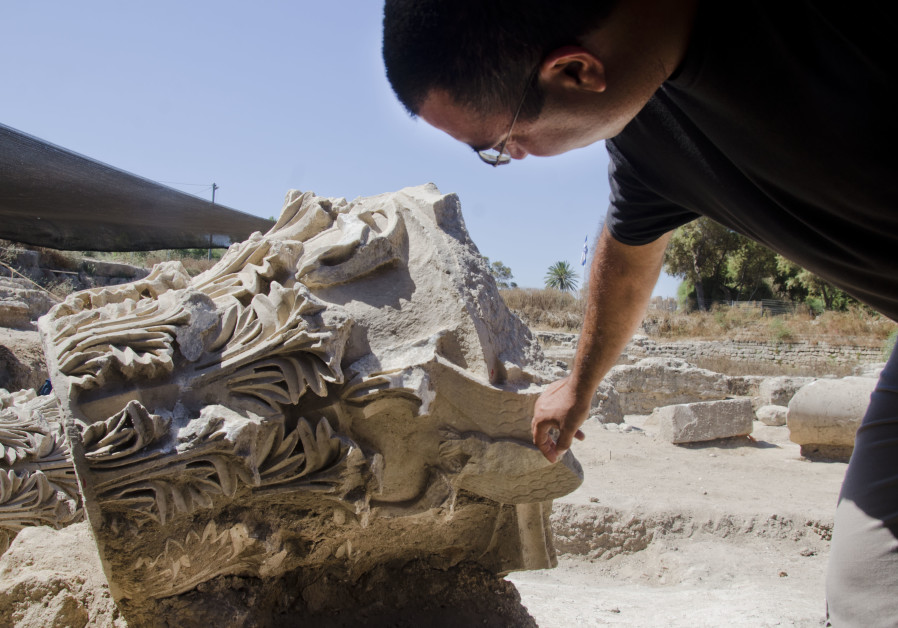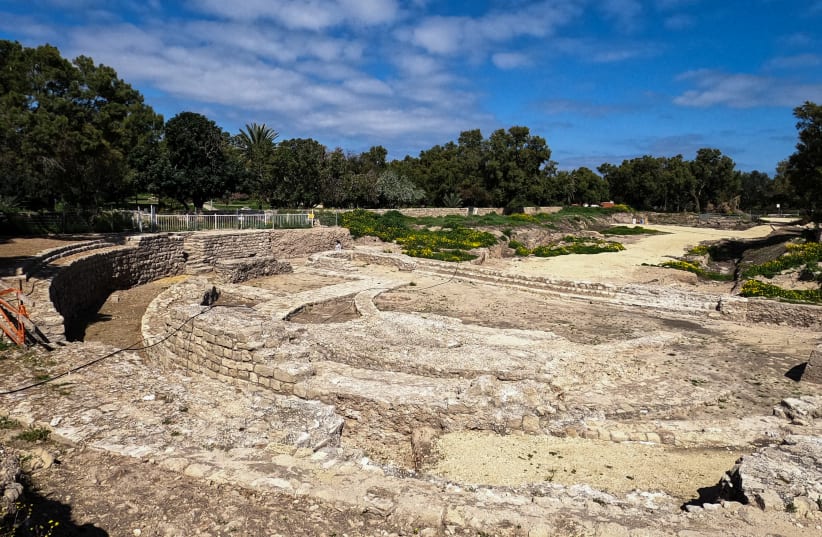The remains of a magnificent Roman basilica, the largest in Israel, have been uncovered in Ashkelon in an excavation conducted by the Antiquities Authority (IAA) within a development project of the Tel Ashkelon National Park and will soon be accessible to the public, the Israel Nature and Parks Authority (INPA) announced on Monday.
Located just a few meters from the seashore, the structure, a public building, was divided into three sections: a main hall and two side parts. According to the archaeologists, the main hall was surrounded by massive marble columns as high as 13 m. and ornate with elaborated capitals, featuring plant motifs and in some instances an eagle – a Roman symbol. Their remains offer an insight into the splendor of the original building.
“The basilica was first discovered in the 1920s by British archaeologist John Garstang who led an expedition on behalf of the Palestinian Exploration Fund and then covered the structure once again,” said Dr. Rachel Bar Nathan, IAA director of excavation together with Saar Ganor and Federico Kobrin.


The area would not be excavated again for almost a century, until a few years ago the works started one more time, in the years 2008-2012 and then in 2016-2018, when the INPA decided to develop the area and reconstruct part of the colonnade.
Among other things, a small odeon (theatre) was uncovered during the works.
“Garstang had already calculated the dimensions of the building, and seeing the remains of the marble columns, made with materials imported from Asia Minor, he had suggested that the basilica dated back to the time of King Herod the Great, since historian Josephus described how the king built a colonnaded hall and other structures in the city,” Bar Nathan said.
Appointed by the Romans as king of Judea in the second half of the 1st century BCE, Herod was known for the extensive construction and restoration works that were carried out around the land on his behalf, including the complete rebuilding of the Temple of Jerusalem.
“Our project started in 2016,” Bar Nathan said. “When we excavated the basilica we realized that while the original structure did date back to the time of Herod, as Garstang thought, the more grandiose elements, the marbles, the columns, were built later, around the 2nd-3rd century CE, the time of emperor Septimius Severus style.”
The archaeologists found some Herodian coins at the site.
Several massive marble sculptures from Severus’s era were also found, some of them portraying pagan gods, including Isis – an Egyptian deity depicted as Tyche, the city’s goddess of fortune – and Nike, the goddess of victory.
When Herod ruled over Judea, Ashkelon was a free city and a renowned trade port. A Jewish population lived there but did not represent the majority. Later, Ashkelon became a Roman city.
In Roman times, the basilica was not a religious building, but rather a public building in the center of the city used for commerce, court cases and other civic functions. In the following centuries, Christian churches would be inspired by this architectural structure.
An earthquake destroyed Ashkelon and the basilica in 363 CE. Its remains would be reused in the Abbasid and Fatimid periods – 8th-12th centuries CE – to build industrial installations in the area.
An operation to preserve and restore the complex, including the basilica and the theater, is currently being carried out by the IAA as part of a joint project by the INPA, the Ashkelon Municipality and the Leon Levy Foundation to develop the area and make it accessible to the public.
The organizations are also working on a new itinerary for visitors, touching all the main attractions in Tel Ashkelon, including an arched Canaanite gate.
“The Tel Ashkelon National Park combines a fascinating antiquities site with unique natural resources characteristic of the dunes in the coastal plain,” Shaul Goldstein, CEO of the INPA, said in a press release. “It was the first national park to be declared in Israel in the 1960s and since then, it has been constantly evolving and renewing for the benefit of visitors from all over the country.”
